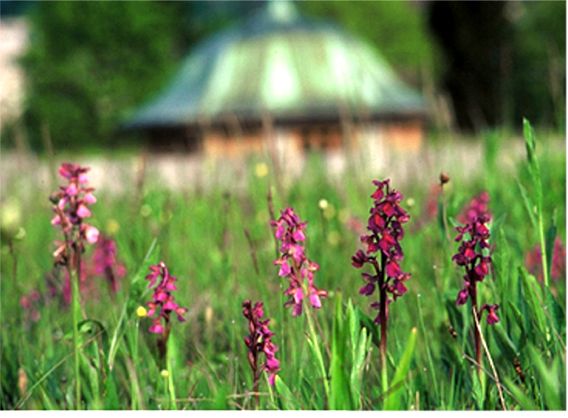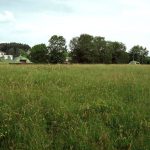
Additional Resources
See the Moos Water Filtration Plant case study from Livingroofs.org. Download the German PDF Seewasserwerk “Moos” in Wollishofen (Z?rich) in German from Dr. Stephan Brenneisen for a complete description of this natural greenroof along with flora and fauna species studies. Read the Architecture Week article Greener Green Roofs of November 2007 – this article is excerpted from Green Roof?A Case Study: Michael Van Valkenburgh Associates’ Design for the Headquarters of the American Society of Landscape Architects by Christian Werthmann, copyright ? 2007.
The ninety + year-old Moos (Moss) Water Filtration Plant near Zurich, Switzerland, supports a nine-acre roof meadow with surprisingly diverse flora, including a sizable community of rare green-winged orchids. The roof was not intentionally designed as a greenroof, and plants have naturally colonized here. The three oldest greenroofs (from 1914) cover approximately 3 hectares and provide habitat for 175 different plant species, including 9 species of orchids. There are a total of five greenroofs here which cover an area of 30,000m2.
The plant processes water of Lake Zurich with sand filters, the treatment allowing levels of drinking water. “Water from the lake of Zurich is pumped into the building and is cleaned to drinking-water as it slowly filters through a layer of sand. It was the first reinforced concrete building in Zurich and was outfitted with a nine-acre (3.6-hectare) earth roof for temperature moderation. The soil substrate consists of 5 cm sand and gravel as a drainage layer and 15 – 20 cm of topsoil,” (Architecture Week, 2007).
The Moos filtration plant in Wollishofen was one of the first ferroconcrete buildings to be constructed in Zurich. The ceiling of slab beams is 8 cm thick, finished with a layer of 2 cm mastic asphalt. After 90 years the two layers had finally combined ? but without any negative impact on the impermeability of the membrane or the vegetation. The only reconstruction that had to be carried out after all these years was at the edges. In all other places the membrane is still fully functional ? even after 90 years.
 Greenroofs.comConnecting the Planet + Living Architecture
Greenroofs.comConnecting the Planet + Living Architecture










